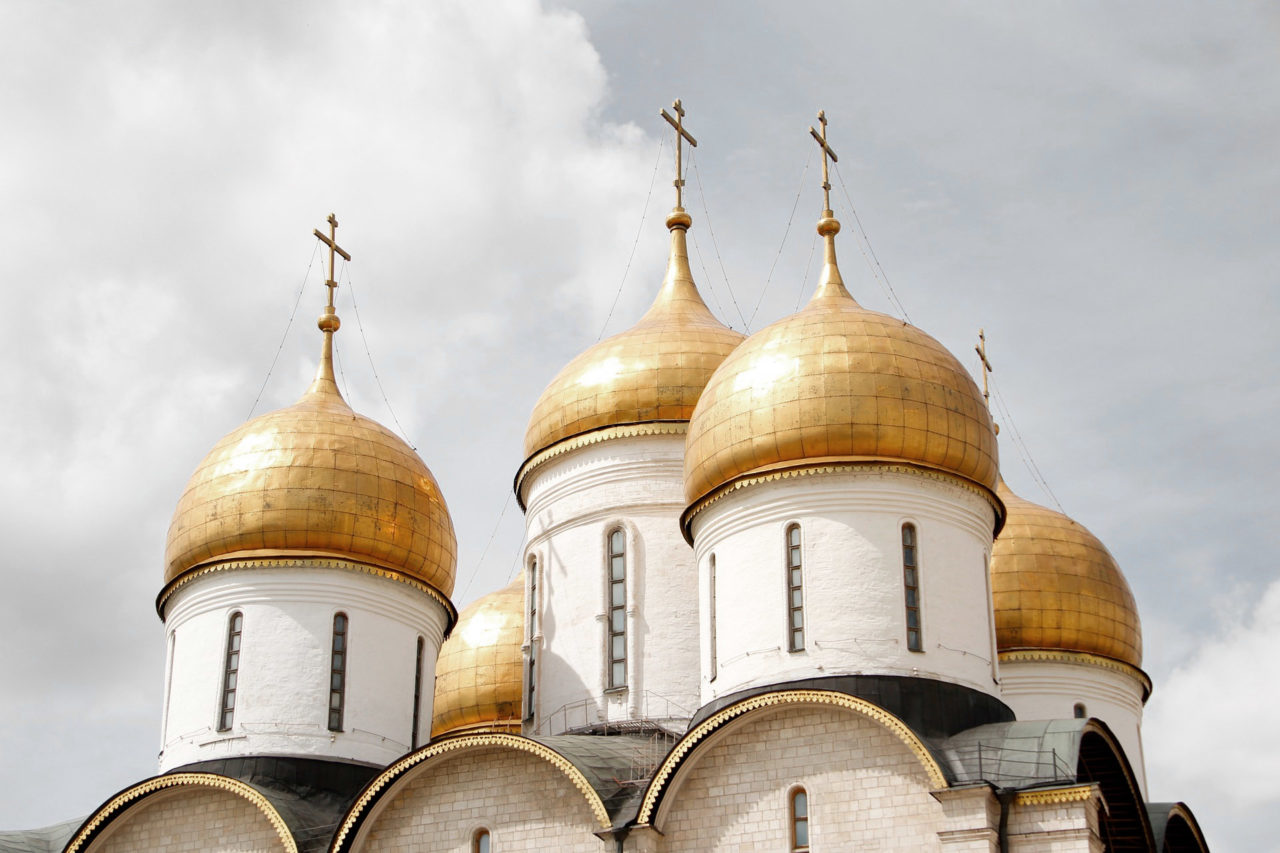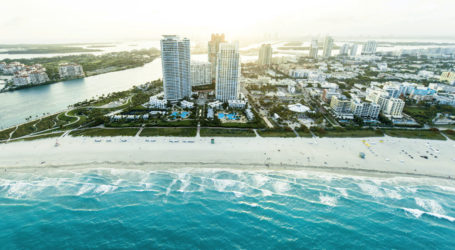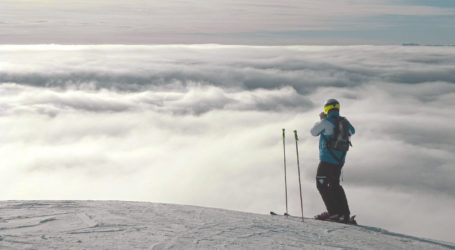Walking in Moscow’s winter wonderland
The best way to discover Moscow is on foot. It may seem unrelentingly urban, dominated by cars and towering skyscrapers, but to find the flowering courtyards, icon-filled churches and house-museums, you need to walk through the back streets and pathways. I spent nearly five years doing that, writing weekly walks and features for the local English language Moscow News. In a city that terrified me at first sight I uncovered hundreds of beautiful corners that I’ve visited in all weathers.
Far from being a deterrent to visitors, Moscow’s legendary cold should be an attraction. The chance to explore the relatively empty streets, full of shining snow crystals, seasonal ice rinks and over-decorated trees, is far more interesting than the sweaty summer crowds around the Kremlin. Gold domes against blue and white or cottages under frosty trees are all part of Moscow’s wintry charm.
The huge areas of parkland encircling the city are perfect for snowy walks. A stroll along the Moskva river at Kolomenskoye to the Unesco-listed Church of the Ascension passes a triple-domed wooden chapel and log cabin cafes serving coffee and pancakes. The old aristocratic landscapes of Kuzminki forest may have lost some of their 18th-century splendour, but there are still griffin-guarded gates near the old church and equestrian statues by the waterside pavilion.
Moscow’s 150-odd museums are great for warming up in and are a rich source of pleasure and frustration to the curious visitor. With an iniquitous dual-pricing system, a lack of signs in English and a nasty habit of closing for renovations, these treasuries of art and artefacts, past lives and libraries are nonetheless well worth visiting. There are museums of just about everything scattered across Russia’s sprawling capital, from military dioramas to scientific prototypes, with unusual themes such as felt boots, vodka, matryoshka dolls or streetlighting.
The reverentially preserved homes of Moscow’s famous inhabitants are great for warming up in. You can admire the silken walls and operatic costumes of singer Fyodor Shalyapin, or the giant fairy tale canvasses in artist Viktor Vasnetsov’s studio. These houses celebrate the lives of storytellers and sculptors, dancers and designers. You can see the skin of a bear that Tolstoy shot under the piano he played, or the bed that Chekhov slept in and his doctor’s bag. The tiny room where poet Vladimir Mayakovsky killed himself in 1930 has become the centrepiece of a surrealist installation that fills the entire apartment block. Twisted chairs and broken mirrors, crumbling columns and giant bathtubs filled with blood reflect not just one extraordinary life, but the whole early-Soviet era with its optimism and tragedy.
It takes a long time for the snow to melt. One excellent way to stay out of the slush is by riding the historic trams as featured in Mikhail Bulgakov’s The Master and Margarita. The original A-route, now the number 39, crosses the city from Chistye Prudy (Clean Ponds) to the University, taking in views of the Kremlin along the river, monuments, markets and fortified monasteries. The Taganka area is also served by trams. Here, you can see a whole street of 19th-century carriage houses in the shadow of brutalist tower blocks, the silver-thread factory that belonged to the family of Konstantin Stanislavsky, the theatrical pioneer, or the ancient Spaso-Andronikov monastery with its museum of icons.
Moscow’s many monasteries are citadels of faith again after the vicissitudes of the atheistic 20th century. The Martha and Mary Convent in picturesque Zamoskvorechye, south of the river, fuses the medieval forms of Novgorod with art nouveau flourishes. The architect was Alexei Shchusev, who also designed the constructivist marble pyramid of Lenin’s tomb on Red Square. Princess Elizabeth, granddaughter of Queen Victoria, founded the convent in 1909 – nine years later, the Bolsheviks threw her down a mineshaft. The garden, full of snowy rosebushes, complements Mikhail Nesterov’s murals inside. Nesterov’s paintings, more of which are on show at the nearby Tretyakov Gallery, are full of birch forests and willowy women in blue dresses, fusing the local and the otherworldly.
Within a 10-minute walk in the same area, you can see the orange and turquoise church of St Gregory, or the dilapidated, baroque Church of the Resurrection in Kadashi. The backstreet roundabouts hide surprises, like the Rot Front chocolate factory or the wooden cottage where 19th-century playwright Alexander Ostrovsky was born, with its attic full of Maly Theatre memorabilia.
One of my favourite winter walks passes through the business district to one of the city’s most colourful markets. A group of revolutionary statues stands bold against the sky outside Ulitsa 1905 Goda metro station, and in the park across the road there are more monuments: a well-muscled worker unearthing a paving stone to use as a weapon, an obelisk, a seated Lenin.
The nearby Krasnaya Presnya Museum’s diorama reconstructs the area during the 1905 revolution: the tsar’s officers approach on horseback from the left, while the revolutionaries, backed by burning buildings, hurl bricks from the right as they swarm over a humpbacked bridge. You can still see this old, cobbled bridge nearby – the Gorbaty Bridge.
Through a spear and helmet-crowned gateway, you enter Krasnya Presnya park, with skating rinks, frozen canals and a museum of ice sculptures. Right, along the river, is a new chapel; the traditional domed architecture looks beautifully incongruous in the Expocentre. I like to pop in and warm up; the interior is light, with yellow-backed frescoes of St Seraphim, a patron saint of merchants.
Going on along the river, under the sci-fi Bagration Bridge, you reach the megaliths of the unfinished business district, including Europe’s tallest buildings. The Naberezhnaya Tower, a glass skyscraper of epic proportions, gleams in the frosty sunshine.
Crossing the river, you emerge on to Kutuzovsky Prospekt behind an equestrian statue of General Bagration, a hero of the Napoleonic war, waving his sword at the traffic. It’s not far from here to the first kiosks of the sprawling Dorogomilovsky Market, with its racks of wicker baskets and wolf skins. The cavernous indoor hall is a sensory treasury: fresh-baked flatbreads from a clay oven, mounds of pomegranates, dangling strings of syrup-dipped walnuts, smoked cheese and beetroot-stained garlics. Then head to nearby Kievskaya station for traditional Russian dumplings in the Moo Moo canteen.










